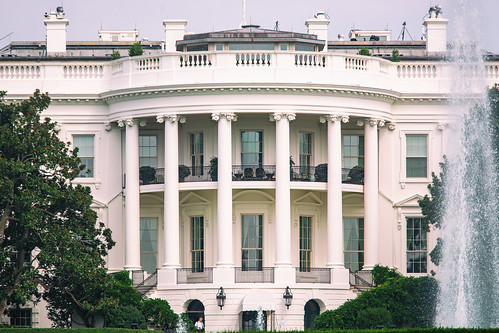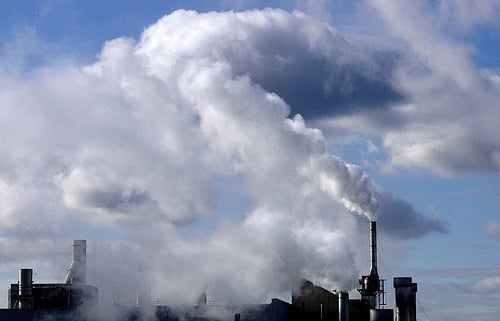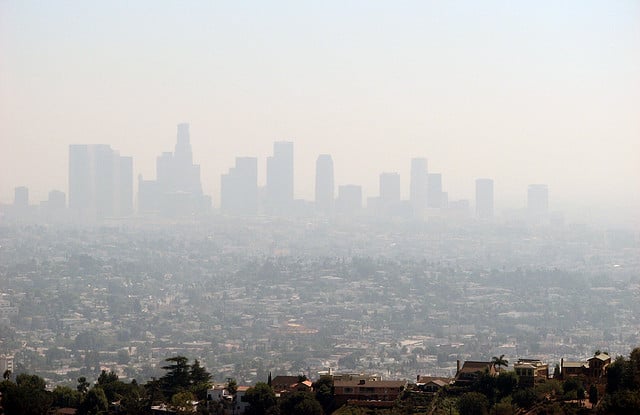On September 16, 2025, the US Environmental Protection Agency (EPA) published a proposal to eliminate the vast majority of its longstanding Greenhouse Gas Reporting Program (GHGRP), which requires thousands of facilities and organizations to report annual emissions of greenhouse gases (GHGs) (40 CFR part 98). (I’ve written about this program over the years, most recently when EPA issued massive revisions in April 2024 (see HERE). The remainder of this note briefly summarizes EPA’s latest interpretation and identifies the small portion EPA proposes to retain, and the existing GHGRP.
Audit, Compliance and Risk Blog
EPA proposes to eliminate most mandatory greenhouse gas emission reporting requirements
Posted by Jon Elliott on Fri, Oct 03, 2025
Tags: EPA, Greenhouse Gas, Clean Air Act, Climate, Environmental Compliance, EPA Regulations, EPA Standards, GHG Reporting, EPA enforcement, Climate Disclosure, Climate Risk, Air Quality
The Trump Administration has issued its budget proposal for federal Fiscal Year (FY) 2026 (October 1, 2025 through September 30, 2026), including a 54% cut in the Environmental Protection Agency (EPA) budget, from $9.1 billion in FY 2025, to $4.16 billion for FY 2026. Many of the cuts apply to grant programs, and the proposal would cut staffing by 9%, from 14,130 full-time-equivalent employees (FTE) to 12,856. Readers should note that these cuts are comparable to those proposed by President Trump during his first term; EPA’s actual annual budget depends on that adopted by Congress (or a continuing resolution in lieu of an adopted budget). The remainder of this note summarizes EPA’s proposed FY2026 budget, including proposed reductions, drawn from EPA’s “Budget in Brief” (68 pages) and “Justification of Appropriation Estimates” (736 pages).
Read More
Tags: EPA, RCRA, tsca, Clean Air Act, Environmental Policy, Climate, EPA Regulations, EPA Standards, Trump, Trump Administration, Climate Reporting
EPA announces 31 reconsiderations and revisions toward Trump administration priorities
Posted by Jon Elliott on Tue, Mar 18, 2025
On March 12, the US Environmental Protection Agency (EPA) announced “31 historic actions in the greatest and most consequential day of deregulation in U.S. history.” These actions move to reconsider, and likely reverse, actions from the Biden administration as well as earlier EPA actions dating back to at least 2009. These actions are summarized in a general press release, and accompanied by more than 20 additional releases announcing specific actions; most involve the Clean Air Act (CAA). EPA links these initiatives to President Trump’s latest executive orders (EOs) and policy initiatives (I wrote about the EOs HERE and HERE). In earlier notes I addressed many of the regulatory and policy actions that will now be reconsidered. )
Read MoreTags: Environmental, EPA, Clean Air Act, Clean Energy, Environmental Policy, CCA, Deregulation, Manufactoring
Trump administration reworking the Environmental Protection Agency
Posted by Jon Elliott on Tue, Mar 04, 2025
Since returning to office in January, President Trump and his administration have promulgated many actions to reduce and revamp the US federal government, and additional actions focused on specific agencies. I wrote about general approaches to environmental regulation HERE. In addition, The Environmental Protection Agency (EPA) has been a target of specific directives, and new EPA administrator Lee Zeldin has already announced important policy and procedural changes at his agency. The remainder of this note summarizes EPA-specific changes ordered and/or instituted as of the end of February 2025.
Read MoreTags: EPA, tsca, clean water, Executive Order, Clean Air Act, environmental protection, Environmental Compliance, Trump, Trump Administration, Environmental Protection Agency
EPA reinstates “Once in Always in” policy for major sources of hazardous air pollutant emissions
Posted by Jon Elliott on Wed, Oct 09, 2024
The Clean Air Act (CAA) directs the Environmental Protection Agency (EPA) to define “hazardous air pollutants (HAPs)” that may pose acute health hazards, and to impose regulations to reduce those hazards. Controls include permits for “major sources” of HAPs based on “Maximum Achievable Control Technologies (MACT),” and lesser controls for non-major “area sources.” Effective September 10, 2024 EPA has reinstated a policy that an emission source that met major source criteria at the time an applicable MACT became effective is “once in, always in” – even if a source makes binding changes reducing its “potential to emit” below the applicable major source threshold, it still cannot formally requalify as a less-regulated area source. This policy was in force from 1995 until EPA reversed it in January 2018 to allow full reclassification. EPA subsequently codified this approach in a rule issued in 2020. However, EPA has now revised that rule to reinstate “once in, always in.” The rest of this note summarizes CAA requirements for HAP sources, and the latest change.
Read MoreTags: Environmental risks, CAA, clean air, Air Toxics, Environment, Clean Air Act, environmental protection
On March 1, 2024, the Environmental Protection Agency (EPA) revised Accidental Release Prevention (ARP) program rules under the Clean Air Act (CAA). ARP was authorized by the 1990 Clean Air Act (CAA) Amendments, and is often known by its core requirement that targeted facilities prepare Risk Management Programs (RMPs) to prevent and respond to potential catastrophic releases of chemicals. The adoption finalizes an agency proposal from 2022 (it also recounts a long series of proposal dating back to 2014; I wrote about it HERE), in which the Biden-era EPA proposed to many of the narrowing amendments to RMP/ARP enacted in 2019 during the Trump Administration (I wrote about the 2019 changes HERE).
The rest of this note summarizes the new revisions, noting their differences from current rules.
Read MoreTags: Health & Safety, EPA, CAA, chemical safety, Air Toxics, Clean Air Act, Toxics Release
The Environmental Protection Agency (EPA) announced on February 7. 2024 its decision to tighten one the National Ambient Air Quality Standard (NAAQS) for particulate matter less than or equal to 2.5 microns; (PM-2.5; also call “fines” in contrast to larger particulates). This decision completes EPA’s reconsideration of a decision in 2020 not to adjust the PM-2.5 requirements (I wrote about that decision HERE); the change reflects in part the changed priorities between the Trump and Biden administrations. The rest of this note summarizes NAAQS issues as they apply to PM-2.5.
Read MoreTags: Environmental risks, Environmental, EPA, clean air, Air Toxics, Environment, Clean Air Act, Environmental Policy
Huge Clean Air Act settlement against truck emission cheater
Posted by Jon Elliott on Tue, Feb 13, 2024
On January 10, 2024, the U.S. Environmental Protection Agency (EPA), U.S. Department of Justice, and the California Air Resources Board (ARB) filed a settlement agreement with Cummins, Inc. covering nearly one million Ram vehicles for which Cummins supplied diesel engines with illegal software-based “defeat devices” that produced misleading emission certification results compared with significantly higher emissions while the vehicles are in actual use. Cummins will pay the largest CAA penalties ever ($1,675 million in federal and state penalties), will fund environmental mitigation projects to compensate for excess nitrogen oxides (NOx) emissions ($175 million), and will also recall 630,000 vehicles (model years 2013-2019) to remove the defeat devices (estimated costs $150 million, including warranty extensions). Cummins will also implement corporate governance, organizational, and technical process reforms to minimize the likelihood of future violations.
Read MoreTags: Environmental risks, Environmental, EPA, clean air, Environment, Clean Air Act, Environmental Policy
After more than 30 years EPA defines a new Hazardous Air Pollutant
Posted by Jon Elliott on Mon, Jan 17, 2022
Since 1990, the Clean Air Act (CAA) has defined a list of Hazardous Air Pollutants (HAPs), requiring the U.S. Environmental Protection Agency (EPA) to set emissions standards for many sources of these pollutants. HAPs include heavy metals, organics, and other airborne pollutants that are not otherwise regulated as “criteria” air pollutants (such as carbon monoxide, particulate matter, and ground level ozone). The 1990 CAA Amendments included a list of 189 HAPs (later corrected to 188), and empowered EPA to modify the list. In the intervening decades, EPA conducted rulemakings and deleted four initially-listed HAPs, but until 2022 had never added a new HAP. However, EPA has now added 1-bromopropane (1-BP) as a new HAP, effective February 4, 2022.
Read More
Tags: HAPs, Clean Air Act
National Contingency Plan now requires monitoring of chemical dispersants
Posted by Jon Elliott on Wed, Aug 04, 2021
The US government promulgates a “National Oil and Hazardous Substances Pollution Contingency Plan” – more commonly referred to as the National Contingency Plan (NCP) – as the blueprint for responses to spills of oil and hazardous substances. The NCP is used for responses under the Clean Water Act (CWA) and the Superfund law (Comprehensive Emergency Response, Compensation and Liability Act (CERCLA)), and is overseen by the Environmental Protection Agency (EPA) (although you should note that the first NCP was issued in 1968, not only before CWA and CERCLA were enacted, and even before EPA before was created).
Read More
Tags: EPA, CERCLA, Clean Air Act, NCP








